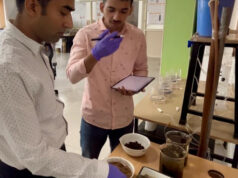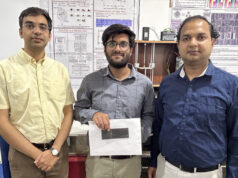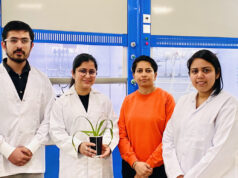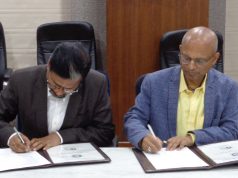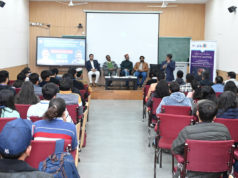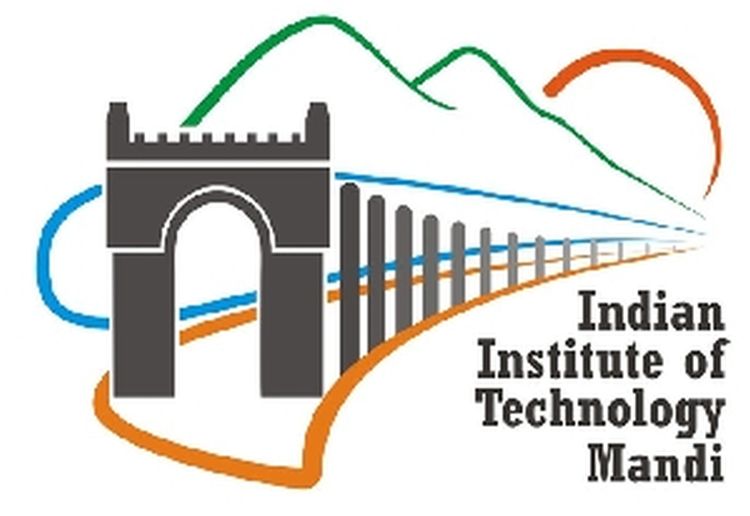About 65% of energy in the world is wasted as heat and that is released into the environment, becoming one of the key players of global warming
Mandi: Indian Institute of Technology Mandi researchers are developing thermoelectric materials that can efficiently convert heat into electricity. While solar power has received a lot of attention, other alternative sources are equally promising, even if less known. Generating power from heat, for example, is attractive as there is a lot of heat that is generated through human activities in industry, power plants, home appliances and automobiles where most of this heat is lost.
A research team led by Dr. Ajay Soni, IIT Mandi, is studying materials that can convert heat into electricity. The team has been prolific in its research on thermoelectric materials and many of its papers have been published in reputed peer-review international journals including Applied Physics Letters, Physical Review B, Journal of Alloys and Compounds, ACS Applied Energy Materials and RSC Journal of Materials Chemistry and Energy Environmental Sciences.
There has been considerable interest in recent years in the development of technologies that can dynamically harvest energy from the environment and convert it to electricity; such futuristic technologies consider Sun, heat and mechanical energy as sustainable sources of energy. Explaining his research, Dr. Ajay Soni said
“Thermoelectric materials work on the principle of Seebeck effect, in which electricity is generated due to temperature differences across the junction of two materials. A typical thermoelectric material must have the trifecta properties of high thermoelectric power and electrical conductivity, low thermal conductivity with a capability of maintaining a temperature gradient. This combination of properties is hard to come by and a few semiconducting materials must be tweaked further for a good thermoelectric efficiency.”
In the Western world, many automobile companies, including Volkswagen, VOLVO, Ford and BMW are developing thermoelectric waste heat recovery systems that promise 3% – 5% improvements in fuel economy. Other potential applications for thermoelectric energy harvesting include powering consumer devices and electronics, aviation and even space applications. Realizing the potential of thermoelectric power generation hinges on materials improvement and research such as those conducted by the IIT Mandi research team can contribute in this regard.
Dr. Ajay Soni’s team works on a range of such materials, and studies their efficiency through experimental and numerical simulation studies. Dr. Ajay Soni studies semiconductors such as bismuth telluride, tin telluride and silver containing crystalline superionic argyrodites and spikes them with various elements in tiny quantities to improve the ‘thermoelectric figure-of-merit,’ a metric that indicates the thermoelectric efficiency of the materials system. Ideally, a figure-of-merit value of 3 – 4 can convert more than 40% of waste heat to useful electrical energy, but in reality, it has hovered around 1, insufficient for practical application.
Dr. Ajay Soni’s research group has observed novel soft phonon modes which are demonstrating the inherent crystalline anharmonicity in the materials, thus giving better thermoelectric performances with a high figure of merit in the range of 1-1.6 for various materials. The outcome gives scope for further explorations and improvements. He mentioned that the research work is extensively funded by IIT Mandi, Department of Science and Technology – Science and Engineering Research Board (DST – SERB) and Department of Atomic Energy – Board of Research in Nuclear Sciences (DAE – BRNS), India.
About 70% of energy in the world is wasted as heat and this heat is released into the environment, becoming one of the key players of global warming. The trapping and conversion of waste heat into electricity can serve the dual purpose of energy-self- sufficiency and environmental preservation.




